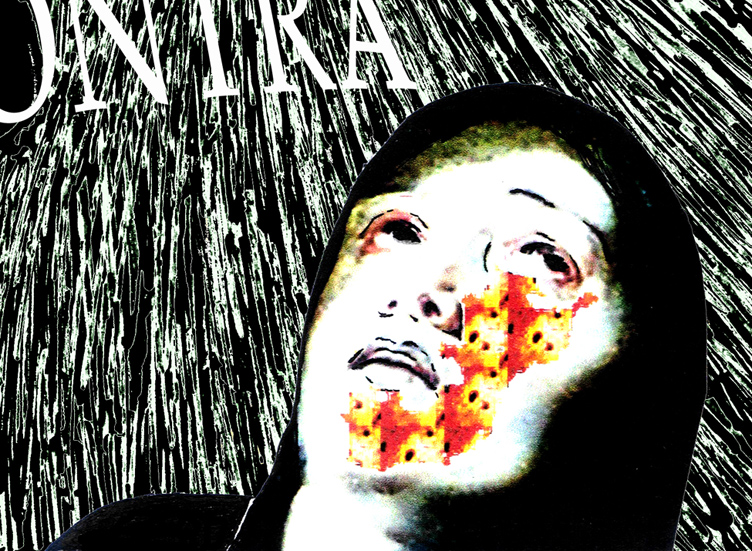so in this thread (art in our merchant society, vpro cover competition, digital design) i would like to put up a design i made a few years back for the vpro cover competition. the theme given was: `new energy' and the explanation talked about the dilemmas facing our society with regard to dwindling traditional energy supplies (oil, gas, coal). any design featuring this theme and /or this dilemma was welcome, also with an enthusiastic invitation to think of new forms of energy.
at the time an important decision had just been made by the (previous) dutch government regarding nuclear energy, namely to continue operating the nuclear plant in borssele until 2033 (instead of closing it down in 2013, as was the earlier plan). the decision had been taken in june, but in november a new government had been elected, and public discussion about nuclear energy should have been priority in my not so humble opinion. the political debate was whether to create even more nuclear plants, to maintain status quo or to strive for elimination.
since then plans for a second nuclear plant in borssele have been developed. so before this, and in the backlight of this debate, i made the design below:

(my design for the january 2007 vpro cover, click on the image for a large enlargement)
&&&&&&
before talking about the design in particular designerspeak (if i'm even capable of that...), i'd like to note that there were -as usual- many wonderful designs. i do not envy a jury! but given the fact that energy is a serious societal problem, i somehow would expect that designs focusing on the problematic side of the commission would also get some attention. in my recollection, the jury picked almost exclusively `light' designs.
well, like i said, don't expect me to be any better in picking nominees or winners...! but to grumpy old me, this perceived favouritism for `light' (funny, easy to grasp, nudge nudge, tongue-in-cheek) designs seems a bit symptomatic of the underestimation in the netherlands of visual art, and of the importance of having a good visual training/education, perhaps i should call this "imagery education".
because an image speaks a thousands words.
much of what we think is governed by images, more than by words. if i want to know if you have understood something, what will i ask most frequently? i believe this to be the question: "you see?".
$$$$$$
but in our merchant society, we have degraded art education in our secondary schools to a very unimportant position. we have made mathematics compulsory for all years of secondary school, as well as foreign languages (merchant merchant!). but we neglect to educate values, emotions, clear thinking, artisticity, creativity, criticism, ...all necessary elements for a culturally and economically thriving society, which also can take its responsibility when it comes to long-term decisions affecting the well-being also of future generations.
can we put a price on being able to live in a non-polluted environment? can we trade the extinction of the whale against a 5 ct reduction in the price of bread? can we trade the cost of war in afghanistan and iraq against the funds necessary to help people starving or struck by natural disaster? ...apparently we can. but future generations will hold us responsible, and rightly so.
and this is what artists can and do tackle, and do try to attract attention to. with images and imagery that cannot be ignored (if the artist is worth her/his salt AND if the merchant mentality in society is not completely dominant).
[wow, frank in rant mode...to be continued, since i forgot to talk about the design in designerspeak -which i probably don't speak anyway, but...]







